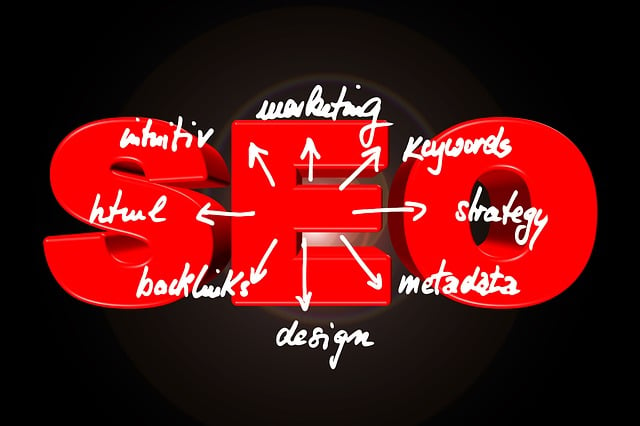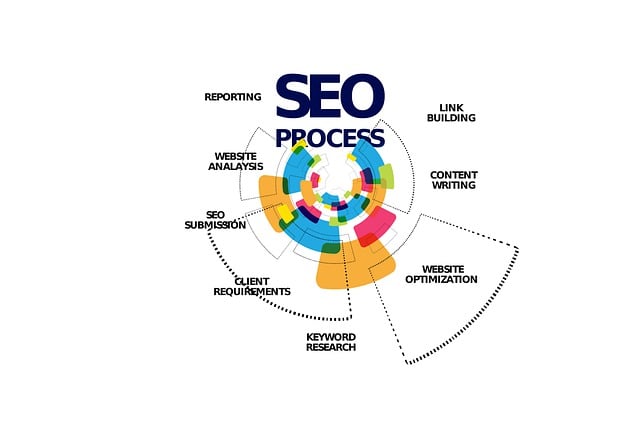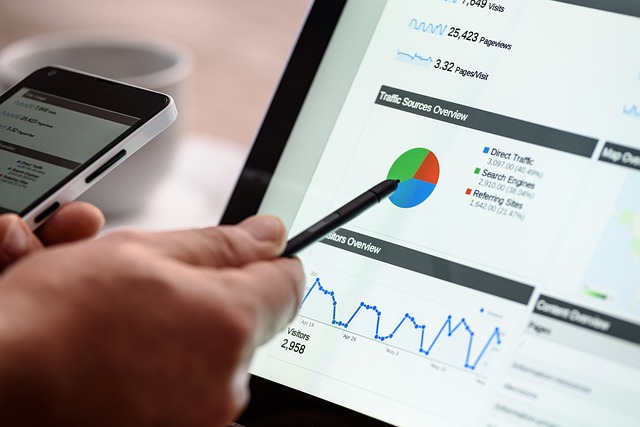On-page optimization for SEO
Understanding On-page Optimization
On-page optimization is a fundamental aspect of search engine optimization (SEO) that revolves around optimizing various components of a webpage to improve its visibility in search engine results. It involves making strategic modifications to the content and HTML source code of a webpage to align with the best practices set by search engines like Google. By focusing on on-page optimization, website owners can enhance the user experience, increase organic traffic, and boost their overall search engine rankings.
The key to successful on-page optimization lies in understanding and implementing a combination of factors, such as keyword research, meta tags optimization, URL structure optimization, content optimization, and more. Each component plays a crucial role in enhancing the relevance and credibility of a webpage in the eyes of search engines, making it easier for users to find and navigate through the website. Moreover, on-page optimization acts as the foundation for a well-rounded SEO strategy, laying the groundwork for off-page optimization techniques like link building and social media marketing.
Importance of On-page Optimization
On-page optimization plays a crucial role in enhancing a website’s visibility and relevance in search engine results. By focusing on optimizing individual web pages, businesses can improve their chances of ranking higher in search engine results pages (SERPs). This directly impacts the website’s organic traffic and increases the potential for attracting more relevant visitors who are actively searching for the products or services the website offers.
Furthermore, effective on-page optimization signals search engines about the relevance and usefulness of a website’s content. This helps search engines understand the purpose of the website, the topics it covers, and how valuable the content is to users. As a result, search engines are more likely to index and rank a well-optimized website higher, making it easier for users to find and engage with the content they are looking for.
Basic Components of On-page Optimization
When delving into the realm of on-page optimization, it is crucial to pay careful attention to certain key components that can significantly impact your website’s search engine visibility and overall success. One fundamental aspect of on-page optimization is the strategic placement and utilization of keywords throughout your website. Conducting thorough keyword research and analysis is essential in identifying the most relevant and valuable keywords that align with your content and target audience.
Another integral component of on-page optimization is the optimization of title tags. A well-crafted title tag not only provides visitors with a clear understanding of the content on a particular webpage but also plays a crucial role in search engine rankings. By incorporating relevant keywords and creating unique, compelling titles, you can enhance the visibility and click-through rate of your web pages, ultimately driving more organic traffic to your site.
Keyword Research and Analysis
Keyword research is a crucial step in the on-page optimization process. It involves analyzing and identifying the most relevant and commonly searched keywords related to your business or content. By understanding the search terms used by your target audience, you can create content that aligns with their needs and increases the chances of your website being discovered through search engines.
A well-executed keyword analysis not only helps in driving organic traffic to your website but also enhances the overall user experience. By strategically incorporating high-performing keywords into your content, meta tags, and URLs, you can improve your website’s visibility in search engine results pages. Additionally, monitoring keyword performance and making necessary adjustments can ensure that your website remains competitive and continues to attract valuable traffic.
Title Tag Optimization
Title tags are a critical element of on-page optimization, serving as the first impression search engines and users have about the content of a webpage. An effective title tag should accurately summarize the page’s content, incorporate relevant keywords, and entice users to click through. Ensuring that title tags are concise, descriptive, and compelling can greatly impact a webpage’s visibility and click-through rates in search engine results pages.
When optimizing title tags, it is essential to prioritize relevance and search intent. By aligning title tags with the main theme of the page and focusing on user intent, website owners can enhance their chances of attracting the right audience and ranking higher in search results. It is advisable to conduct thorough keyword research to identify high-performing keywords, strategically place them at the beginning of the title tag, and avoid keyword stuffing. Additionally, incorporating unique selling points or calls to action within title tags can further increase their effectiveness in enticing users to visit the webpage.
Meta Description Optimization
Meta Description Optimization plays a crucial role in enhancing the click-through rate of a webpage. A well-crafted meta description provides a concise and compelling summary of the content, enticing users to click on the link. It is essential to keep the meta description within the recommended character limit to ensure that the entire description is visible in search engine results.
In addition to summarizing the webpage content, the meta description should also include relevant keywords to improve the page’s visibility in search results. By incorporating keywords naturally into the meta description, you can signal to search engines that your content is highly relevant to user queries. It is important to write unique meta descriptions for each page on your website to avoid duplicate content issues and ensure that each page stands out in search results.
Heading Tag Optimization
One of the crucial elements of on-page optimization is effectively optimizing heading tags. These tags play a significant role in guiding search engine crawlers and users about the structure and importance of the content on a webpage. When optimized correctly, heading tags not only enhance the readability and organization of the content but also contribute to improved search engine rankings.
Heading tags such as H1, H2, and H3 should be utilized strategically to outline the hierarchy of information on a webpage. The H1 tag holds the highest importance and should feature the main keyword or primary topic of the page. Subsequent heading tags, like H2 and H3, can be used to further categorize and break down the content into sections. It is essential to ensure that the heading tags are relevant, concise, and descriptive, aligning with both user intent and search engine algorithms.
URL Structure Optimization
When it comes to optimizing your website for search engines, paying attention to your URL structure is crucial. A well-structured URL not only benefits search engine crawlers but also enhances user experience. Keep your URLs concise and descriptive, including relevant keywords that accurately represent the content of the page. Avoid using irrelevant characters, numbers, or special symbols in your URLs as they can confuse both users and search engines.
In addition to using clear and keyword-rich URLs, it is important to ensure that your URL structure is consistent throughout your website. Consistency helps search engines understand the hierarchy and organization of your site, making it easier for them to index and rank your pages accurately. Consider organizing your URLs logically, reflecting the structure of your website’s content to provide a smooth navigation experience for both users and search engines alike.
Image Optimization
Image optimization plays a crucial role in enhancing user experience and improving SEO performance on a website. Choosing the right file format for images, such as JPEG, PNG, or GIF, is essential to maintain a balance between image quality and file size. Compressing images without compromising quality helps in reducing loading times, which is vital for user engagement and search engine rankings.
When optimizing images, using descriptive and relevant filenames is key to make them more searchable and understandable for both users and search engine crawlers. Adding alt text to images not only improves accessibility for visually impaired users but also provides search engines with valuable information about the content of the image. By incorporating keywords naturally into alt text and filenames, website owners can further boost their SEO efforts and drive more organic traffic to their site.
Content Optimization
Content optimization is a crucial aspect of on-page SEO that involves strategically refining the textual content on a webpage to enhance its visibility and relevance to search engines. In order to rank higher in search engine results pages (SERPs), it is essential to create engaging, informative, and keyword-rich content that resonates with the target audience while also satisfying search engine algorithms.
When optimizing content, it is imperative to conduct thorough keyword research to identify relevant terms and phrases that users are searching for in relation to your topic. By strategically incorporating these keywords into the content in a natural and seamless manner, you can increase the chances of your webpage being discovered by search engine users. Additionally, structuring the content with clear headings, subheadings, and bullet points can improve readability and user experience, further enhancing the optimization of the page.
Internal Linking
Internal linking is a crucial aspect of on-page optimization that often gets overlooked by website owners. By strategically linking to other pages within your own website, you not only help users navigate your site more easily but also improve the overall user experience. These internal links also help search engines understand the structure of your website and the relevance of different pages, which can positively impact your site’s rankings.
When implementing internal linking, it’s essential to use relevant anchor text that accurately describes the linked page’s content. This helps both users and search engines understand what to expect when they click on the link. Additionally, be sure to link to pages that are contextually related to the content of the current page, as this can provide additional value to your website visitors and improve the overall flow of information on your site. By incorporating internal links strategically throughout your website, you can enhance user engagement, increase time spent on your site, and boost your SEO efforts.
External Linking
When it comes to optimizing a website, external linking plays a crucial role in establishing credibility and authority. By including relevant outbound links to reputable sources, you not only provide additional value to your readers but also signal to search engines that your content is well-researched and trustworthy. External links can also help improve the user experience by directing visitors to further information on a specific topic.
It is important to ensure that the external links you include are from authoritative websites and are relevant to the content on your page. By building a network of high-quality external links, you contribute to the overall authority of your website and boost your chances of ranking higher in search engine results. Additionally, external linking can help in building relationships with other websites in your industry, potentially leading to backlinks and collaborations in the future.
Mobile Optimization
Mobile optimization is a crucial aspect of ensuring a seamless user experience on websites. With the increasing use of smartphones and tablets, it is essential for websites to be mobile-responsive. This means that the website should be easy to navigate, quick to load, and all content should be displayed correctly on mobile devices. Failure to optimize for mobile can result in high bounce rates and poor user engagement.
One key aspect of mobile optimization is ensuring that the website design is responsive. This means that the layout of the website adjusts automatically depending on the size of the screen it is being viewed on. Additionally, it is important to optimize images and media files for faster loading times on mobile devices. By prioritizing mobile optimization, websites can provide a user-friendly experience and improve their overall search engine rankings.
Site Speed Optimization
Site speed optimization is a critical aspect of website performance that should not be overlooked. A fast-loading site not only provides a better user experience but also positively impacts search engine rankings. Users today expect websites to load quickly, and any delays can result in high bounce rates and lower conversions. Therefore, optimizing site speed is essential for retaining visitors and maximizing engagement.
To improve site speed, various strategies can be implemented, such as optimizing images, reducing server response time, leveraging browser caching, and minimizing HTTP requests. Compressing files and resources, as well as using content delivery networks (CDNs), can also help enhance loading times. Additionally, regularly monitoring and analyzing site speed using tools like Google’s PageSpeed Insights can provide insights into performance issues and areas for further improvement. By prioritizing site speed optimization, website owners can create a seamless browsing experience that benefits both users and search engines.
Monitoring and Analysis
Effective monitoring and analysis are crucial aspects of any successful on-page optimization strategy. By regularly tracking key performance indicators and analyzing the data gathered, businesses can gain valuable insights into the impact of their optimization efforts. This allows them to identify areas for improvement, make informed decisions, and adjust their strategies accordingly to ensure continuous growth and success.
Monitoring involves keeping a close eye on various metrics such as organic traffic, keyword rankings, bounce rates, and conversion rates. By utilizing advanced analytic tools, businesses can gather detailed data on user behavior and website performance. This data can then be analyzed to assess the effectiveness of different optimization techniques and pinpoint any issues that may be hindering the overall performance of the website. Armed with this information, businesses can take proactive steps to optimize their on-page elements further and enhance their digital presence.






